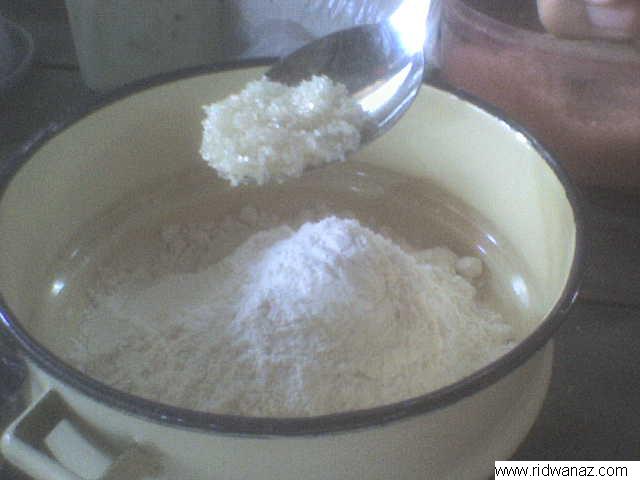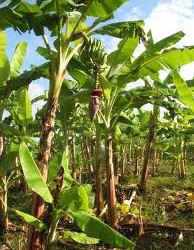Each group of wild goats can be distinguished by the mass as follows.1. Nemorhaedini (grove goral goat)These families consist of a genus and Capriconis Nemorhaedus.a. Genus NemorhaedusConsists of one type, ie Nemorhaedus goral goral goat alias. Wild goats living in the mountains of Kashmir and North China. There
are 2 types of goat goral, namely Nemorhaedus-goral goral (aka goral
goral cashmere cashmere) and Nemorhaedus goral caudatus (north Chinese
goral goral aka northern china).b. Genus CapriconisConsists of one type, ie Capriconis sumatraensis aka serow (goat wild Sumatran). In Japan there are Capriconis crispus aka japanese serdus or wild goat called Japan. Height of approximately 1 m, short horns, and ears like a donkey. In Sumatra, the wild goat found in the mountains Tapanuli, Kerinci, Ranau, and Lampung.2. Budorcatini (clumps of goat takin)There is one genus, the genus Budorcas. Its members consist of only one species, namely Budorcas taxicolor takin alias. The wild goat stands about 1 meter and wild life in the mountains of China and Japan. Taksin
wild goat found in Japan called mishini takin (Budorcas taxicolor
taxicolor), located in Tibet called Szechwan takin (Budorcas taxicolor
tribetana), and China called Shensi takin (Budorcas taxicolor bedfordi).3. Rupicaprini (clumps of goat kamois)This clump has genus Rupicapra and Oreamnos.a. Genus RupicapraOnly one species, namely Rupicapra Rupicapra kamois aka chamois or goat. The wild goat horns short and round bends. Adult height reached 30 cm goat. The wild goats live in the mountains of rock Europe and Asia Minor (Turkey).b. Genus OreamnosConsists of one type, ie Oreamnos americanus or rocky mountain goat or mountain goat rock rocky mountain in North America. North American wild goat is classified as one of the groups kamois goat. Male and female goat horns like a dagger.4. Caprini (goats native clump)There are five genera, namely Capra, Ammotragus, Hemitragus, Pseudois, and Ovis.a. Genus Capra aka parent species native goatMembers
consist of four types, namely aka goat Capra ibex ibex, Spanish ibex
Capra pyrenaica alias or Spanish wild goat, Capra falconeri aka Markhor
goat and wild goat Capra aegagrus alias or wild goat aegagrus. Ibex
goat has some kind of spread from the mountains of Western Europe to
Russia, namely aka alpine ibex Capra ibex ibex (mountain goat alpine
ibex), aka nubiana nubian ibex Capra ibex (ibex goats Nubian), Capra
ibex ibex abyssian walie alias or Abyssinian ibex goat ,
Capra ibex ibex servertozoi aka west Caucasian (Caucasian ibex goat
west), Capra ibex ibex cylindricornis aka east Caucasian (Caucasian ibex
goat east), and Capra ibex sibirica aka Siberian ibex (ibex goat
Siberia). This goat horns are much sought after because of the magnificent and long.Goat
aka pyrenaica Spanish ibex goats have some kind of child, aka the goat
Capra pyrenaica pyrenaica pirenaika Spanish, Capra pyrenaica lusitanica
aka the northwest Iberian / sierra dogorez ibex, Capra pyrenaica
hispanica aka sierra Nevada ibex or goat pirenaika sierra Nevada.Goat
makhor consists of several subspecies, namely heptneri aka goat Capra
falconeri makhor Bukhara, aka goat Capra falconeri falconeri makhor
asthor, and Capra falconeri jerdoni aka suleman makhor.Aegagrus
aka wild goat goat also consists of several subspecies, among which are
aegagrus aegagrus Capra aka asia minor wild goat, Capra aegagrus blythi
aka wild goat India (sind wild goat), and Capra hircus aegagrus aka
goat bezoar or benign (domestic goat) that tersebat in areas such as Pakistan and Turkey.b. Genus AmmotragusConsists of one type, ie Ammotragus LERVIA aka barbary sheep (lamb and sheep tedal suria). Barbary
sheep were still wild consists of several subspecies, including
Ammotragus LERVIA LERVIA aka mauritania barbary sheep (Mauritanian
barbary sheep), Ammotragus LERVIA ornatus aka Egyptian barbary sheep
(Egyptian barbary sheep), Ammotragus LERVIA angusi (water barbary
sheep), and Ammotragus LERVIA shariensis barbary sheep aka the Sahara desert (sahara barbary sheep).c. Genus HemitragusConsists of one type, ie Hemitragus jemlahicus aka sheep tahr. Sheep
were still wild tahr is comprised of several subspecies that spread
from the Himalayas to Saudi Arabia, of which Hemitragus jemlahicus
jemlahicus aka sheep Himalayan tahr mountain (Himalayan thar),
Hemitragus jemlahicus schaeferi aka sheep thar sikkim (sikkim tahr), aka
hylocrius Hemitragus Lamb Nilgiri tahr (nigliri tahr), and Hemitragus jayakiri aka sheep tahr arabia (arabia tahr). About 1 m high. live in the canyon and hillsides are cheating.d. Genus PseudoisConsists of one type, ie Pseudois nayaur aka wild sheep (blue sheep) or sheep nayaur (blue sheep). Nayaur sheep consists of several subspecies distributed in the Himalayas, China, Africa. Among these are Pseudois nayaur nayaur aka himalayan blue sheep (Himalayan blue sheep). Pseudois nayaur szechuanensis aka Szechwan blue sheep, and Pseudois nayaur scheferi aka pigmy blue sheep.e. Genus OvisMembers
consist of two species, the wild sheep Ovis ammon alias (wild sheep)
and Ovis Canadensis aka wild big horn sheep (bighorn sheep). Each of these has some wild sheep subspecies. Wild sheep Ovis ammon live in the mountains. The
wild sheep species has several children scattered in the plains of Asia
and Europe, among which is the alias sheep Ovis ammon musimon mauflon
(European mouflon), aka sheep Ovis ammon ophion urial Cyprus (Cyprus
urial), aka sheep Ovis ammon Gmelin urial armenia (armenian urial),
Ovis ammon orientalis aka elburs urial sheep (urial elburs), Ovis ammon
nigrimontana argali sheep kara aka tau (tau kara argali), Ovis ammon
polli aka pamir argali sheep (argali pamir), and sheep Ovis ammon aries
aka benign peliharan ( domestic sheep) which consists of different types of breeds. Big
horn sheep Ovis canadensis also consists of several subspecies
distributed in mainland America and Asia, among Ovis canadensis
canadensis aka wild sheep big horn rocky mountain (rocky mountain
bighorn sheep), Ovis canadensis dalhi aka dall's sheep, Ovis canadensis
nivicola aka kamchathan snow sheep, Ovis canadensis and audiboni aka audubon's bighorn sheep.5. Ovibovini (clumps of goat muskus)There is one genus that is Ovibus. Members to only one type, namely muskus aka Ovibos moschatus (musk ox), which at first glance looks between goats and cows. Goat
is comprised of several subspecies that live scattered in Alaska until
near the northern polar regions, among which are niphoecus aka Ovibos
moschatus muskus Wager (Wager musk ox), and Ovibos moschatus aka Wardi
muskus Greenland or muskus green island (Greenland musk ox). Muskus goat is often called cows muskus












